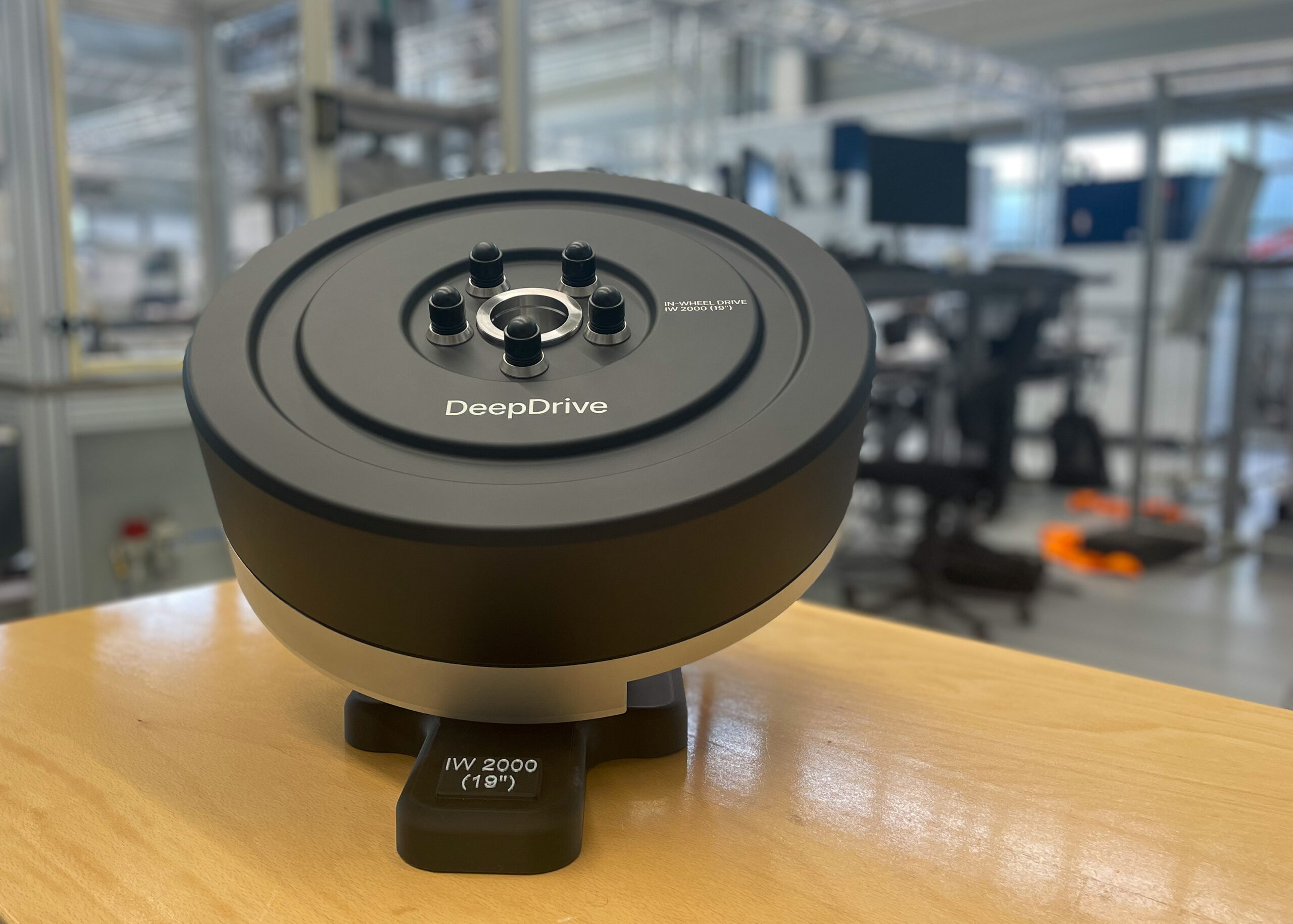News
Introducing DeepDrive’s IW 2000 (19")
IN-WHEEL DRIVE
2025 / 02 / 09
At this year’s IAA Mobility in Munich, DeepDrive is presenting its full portfolio of next-generation electric drives. One of the highlights is the IW 2000 (19") – an In-Wheel motor designed to deliver outstanding torque and efficiency in an ultra-compact package.
Built on our patented Dual Rotor, Radial-Flux technology, the IW 2000 (19") achieves up to 2,000 Nm of peak torque while weighing only 34 kilograms. This combination of lightweight design, high torque density, and direct integration makes it an ideal choice for scalable applications across future EV platforms.
ENGINEERING FOR TORQUE DENSITY
“In an In-Wheel motor, space is extremely limited inside the wheel hub. That’s where our Dual Rotor approach really shines,” explains Jannik Stammler, Engineering Specialist and In-Wheel Product Owner at DeepDrive. “It lets us use the stator’s magnetic field far more effectively, giving us exceptionally high torque density within a very confined volume.”
This high torque density is achieved without a gearbox – which means no gear losses. The IW 2000 converts electrical energy directly into torque at the wheel, resulting in exceptionally high overall efficiency and direct responsiveness.
ILENT PERFORMANCE
Noise and vibration are often a concern with In-Wheel drives, as the motor sits outside the car and closer to the passenger. “Our goal was to develop a truly silent drive,” says Stammler. “Thanks to our electromagnetic topology and extremely low torque ripple, noise and vibration are inaudible.”
This NVH advantage makes the In-Wheel motor not only highly efficient, but also extremely comfortable in real-world driving.
PLUG & PLAY INTEGRATION
Another key strength of the IW 2000 is its ease of integration. Mounted directly on the wheel carrier, with only a few required connections (high-voltage, low-voltage control, and coolant), the In-Wheel Drive is effectively plug & play for OEMs.
“Our universal design makes the motor suitable for most platforms,” Stammler explains. “We follow a ‘one size fits all’ principle – starting with 19-inch wheels, the most common size, but also adaptable to 16-inch and larger wheels. That flexibility means OEMs can add all-wheel drive without changing their core platform.”
TACKLING THE UNSPRUNG MASS CHALLENGE
One of the most common concerns about In-Wheel drives is the increase in unsprung mass. With the IW 2000, DeepDrive directly addressed this by focusing on lightweight design and material efficiency.
“We’ve minimised the use of sheet metal, copper, steel and magnets, which not only reduces weight but also lowers cost,” says Stammler. “At just 34 kg, our motor is among the lightest in its class – and we still see room to reduce weight even further.”
Looking ahead, regenerative braking could unlock even more potential: with sufficient power to provide full braking force, the In-Wheel motor could one day make mechanical brakes redundant, further reducing weight and complexity.
LOOKING AHEAD
In the near term, DeepDrive sees In-Wheel motors as ideal for all-wheel drive add-ons that don’t require platform changes.
In the medium term, once platforms are designed around In-Wheel integration, the technology’s core advantages will unfold: the space savings enable entirely new vehicle architectures. This, for instance, opens the imagination for the next generation of autonomous vehicles, where maximised interior space and new design freedoms become key differentiators.
The IW 2000 (19") will be shown at IAA Mobility 2025, Hall A1, Booth C23, alongside DeepDrive’s Central Drive and the newly launched Generator.


